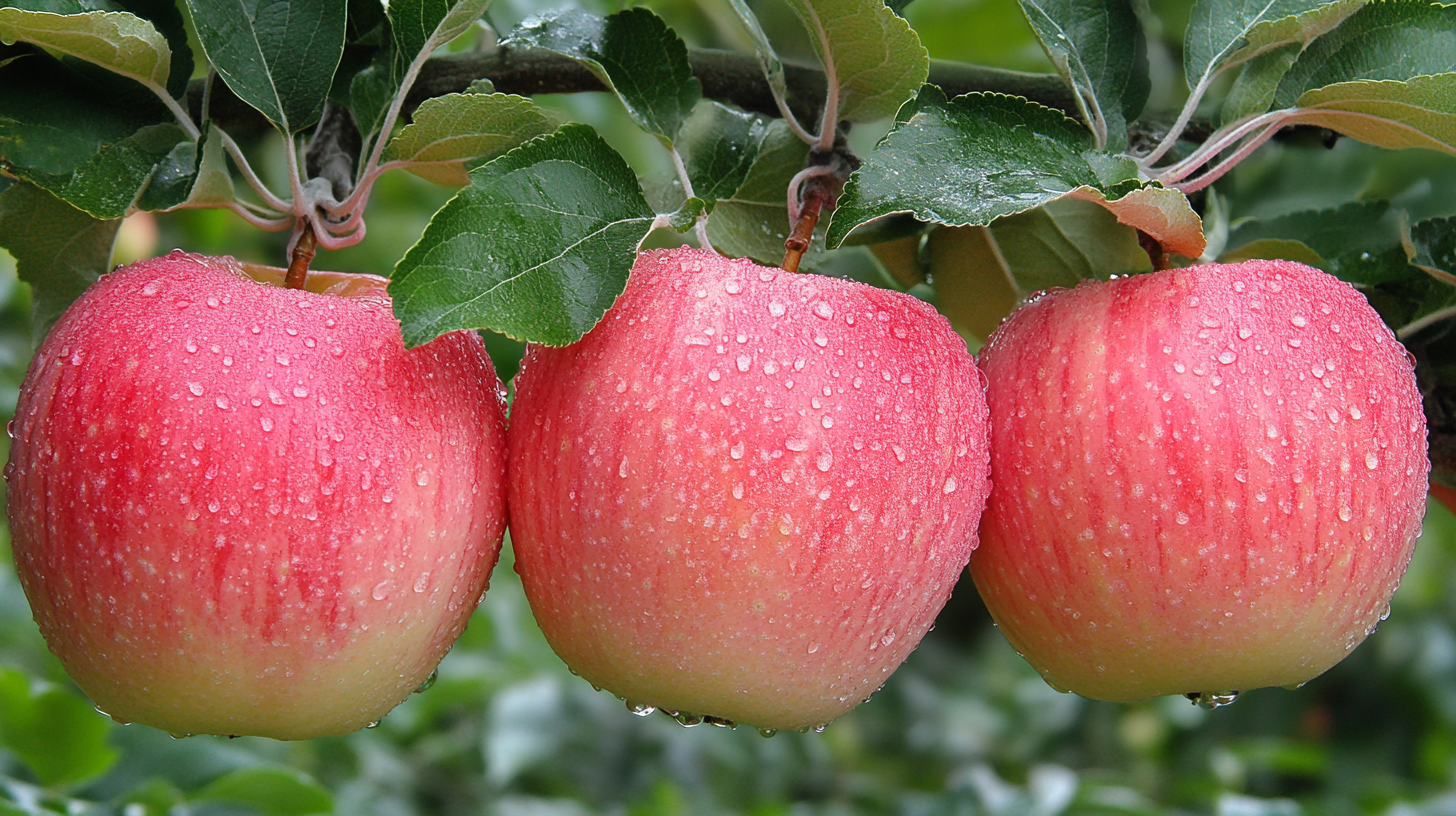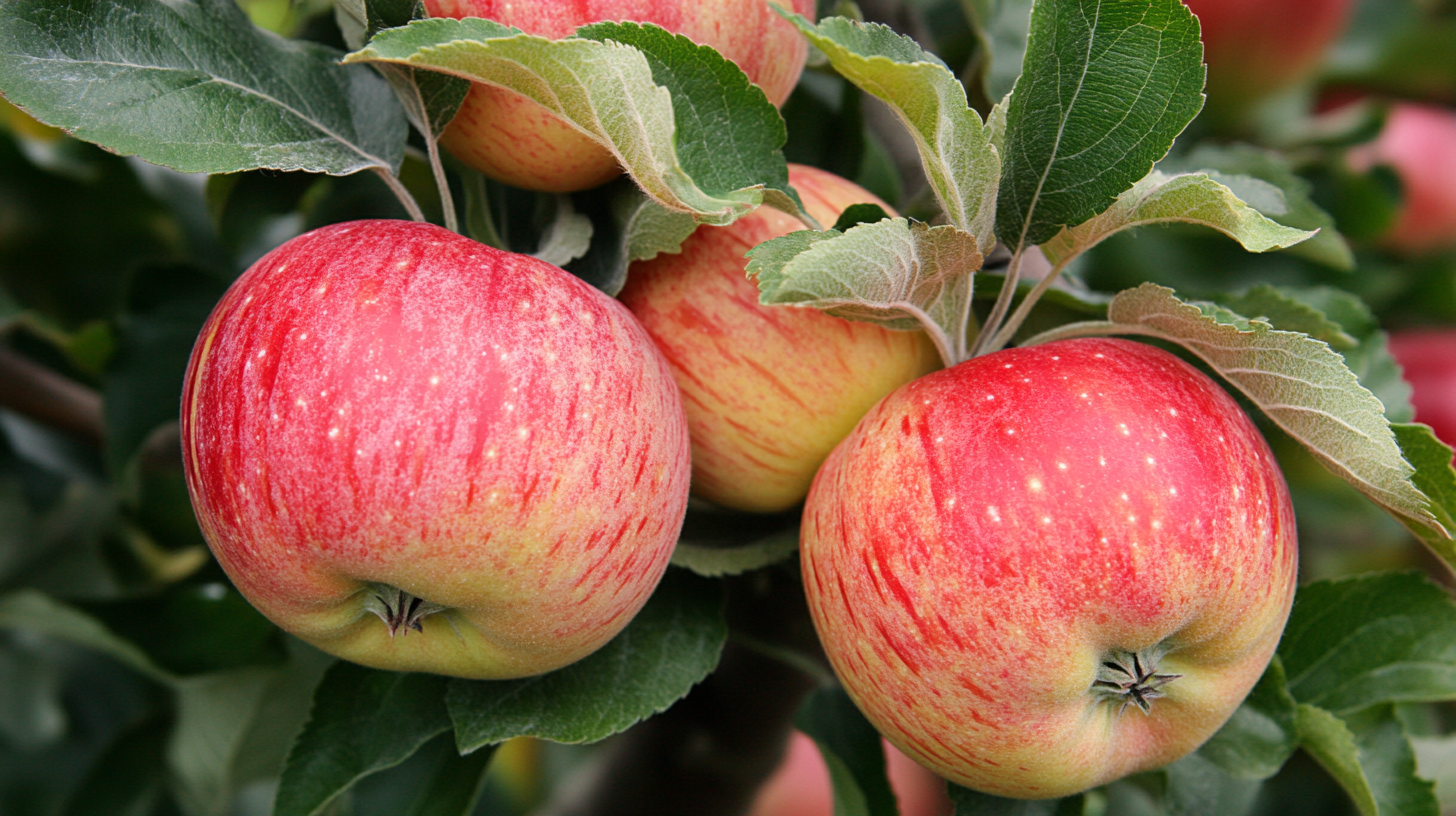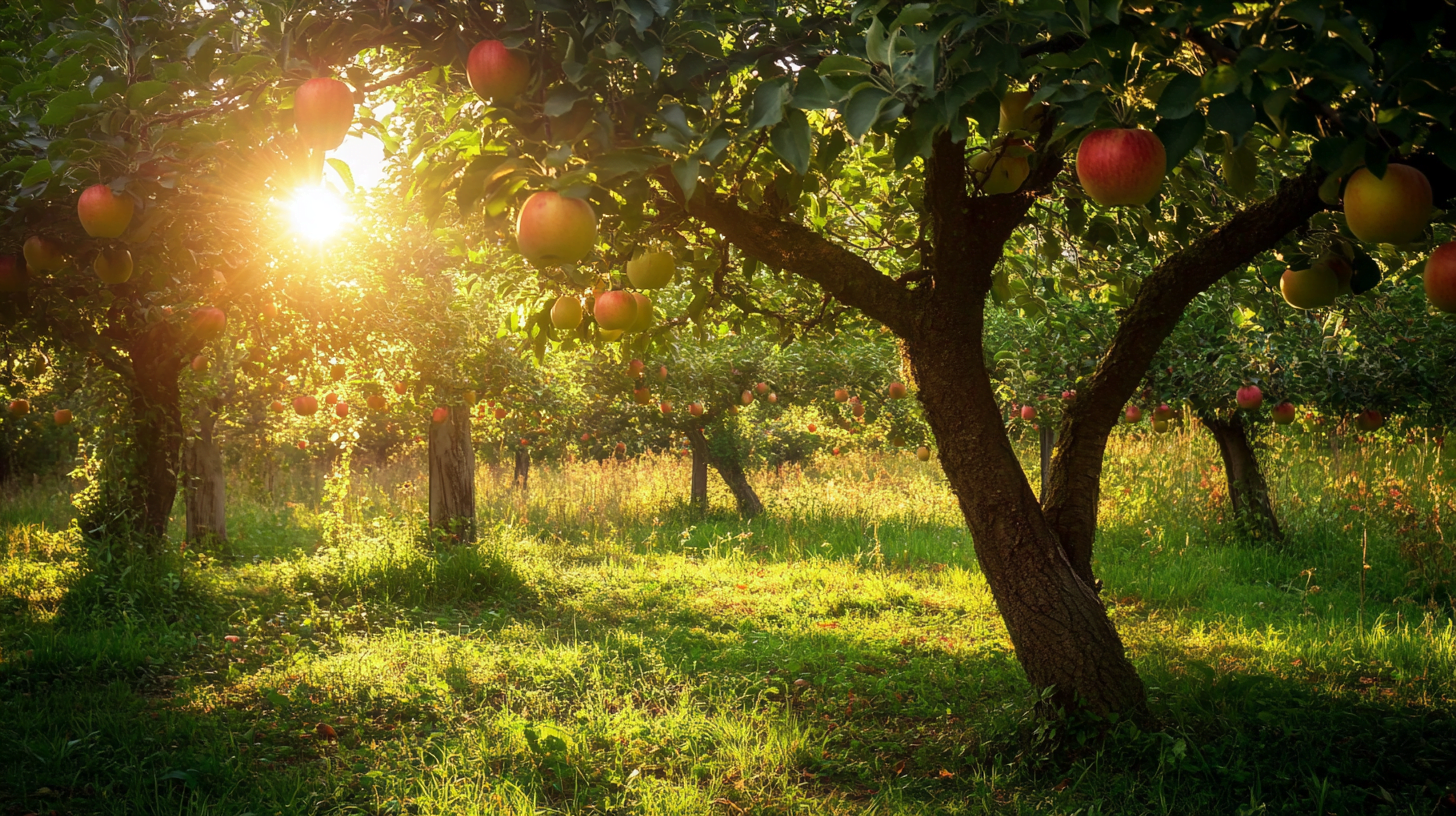Beautiful Plants For Your Interior
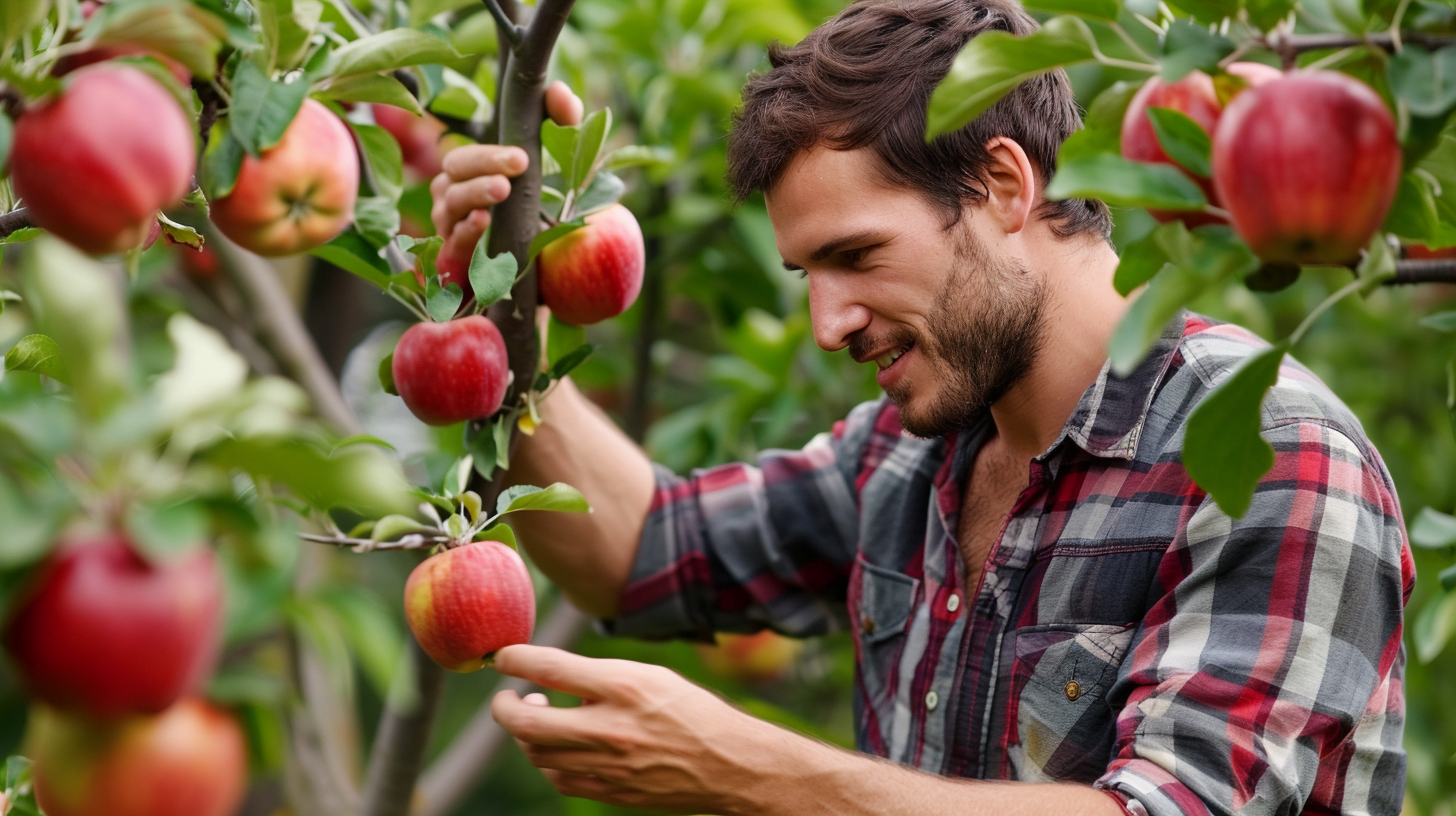
Table of Contents
Importance of Pruning
Pruning is a critical practice in the management and cultivation of apple trees. It involves the selective removal of certain parts of a tree to control its growth and to improve its health and productivity.
Timing for Pruning
The timing of pruning plays a pivotal role in the health and growth of apple trees. For apple trees, pruning is best done late in winter, just before spring when the trees are dormant. This timing helps avoid severe icing on fresh cuts and allows for influencing the tree’s spring growth.
Pruning during dormancy once the leaves have fallen is ideal because it minimizes the risk of disease transmission and allows the gardener to see the tree’s structure clearly. Pruning too soon, such as in the fall, can cause the tree to generate new growth that may be damaged by winter frosts. Conversely, pruning apple trees during blossom time in the spring should be avoided due to the risk of spreading diseases like fire blight (Orchard People).
Benefits of Pruning
Pruning is beneficial for several reasons:
- Tree Health: It removes dead, diseased, or damaged branches, reducing the likelihood of disease spread and pest infestation.
- Sunlight and Air Circulation: By thinning out the branches, pruning allows better light and air penetration, which is crucial for fruit ripening and reducing disease risk.
- Controlled Growth: Pruning helps maintain the tree’s shape and size, making it easier to harvest and manage (Okanagan-Kootenay Sterile Insect Release Program).
- Enhanced Fruit Quality: Regular pruning encourages the growth of new fruiting wood, which can lead to better fruit size and quality.
- Energy Distribution: Removing excess branches allows the tree to direct more energy to the development of the remaining branches, leaves, and fruit.
For young apple trees, pruning is particularly important as it helps in developing a strong framework of branches that can support fruit production in the coming years. Most apple trees are grafted onto dwarf or semi-dwarf rootstock, and pruning when the tree is young provides control over its ultimate size, which is primarily determined by its rootstock and innate vigor.
When considering pruning, it’s essential to understand your tree’s growth habits and requirements. Apple trees come in various varieties with different pruning needs. Whether you are managing full-size apple trees or dwarf apple trees, the principles of good pruning remain the same. To learn more about planting and caring for these trees, visit our guide on how to plant apple trees, and for a deeper understanding of their blooming cycle, explore our article on apple tree blossoms.
Pruning Techniques
Pruning is a vital horticultural practice that, when executed properly, can greatly improve the health and productivity of apple trees. The techniques involved require a combination of art and science, focusing on the orientation of the branches and understanding the unique fruit-bearing habits of the tree.
Branch Orientation
Proper branch orientation is essential for the development of a strong, productive apple tree. Branches should ideally grow outward, away from the center of the tree. This outward growth facilitates better air circulation and light penetration within the canopy, which is crucial for reducing disease risk and aiding fruit ripening. Branches that grow inward toward the center or that cross over other branches should be pruned to prevent these problems.
When pruning, aim for branches with wide angles, as narrower angles can lead to weaker branches and may eventually break under the weight of the fruit. It’s also important to remove any vigorous upright shoots, known as water sprouts, that can arise from pruning cuts or along the trunk and main branches. These shoots are unproductive and can shade out fruit-bearing parts of the tree.
The following table summarizes the guidance for branch orientation:
| Ideal Branch Growth | Branches to Prune |
|---|---|
| Outward facing | Inward growing |
| Well-spaced | Crossing or rubbing |
| Wide-angled | Upright water sprouts |
Source: Oregon State University Extension Service
Understanding Fruit-Bearing Habits
To prune apple trees effectively, it’s essential to recognize their fruit-bearing habits. Most modern apple varieties are spur-bearing, producing fruit on stubby twigs known as spurs, which are found along the branches. These spurs can be productive for many years. Older apple tree varieties may be tip-bearing, setting their fruit buds at the tips of the branches. Knowing whether the apple tree is spur-bearing or tip-bearing is critical to avoid mistakenly cutting off the fruiting wood.
For spur-bearing varieties, pruning involves thinning out the older spurs to make room for new ones and to prevent overcrowding, which can diminish fruit size and quality. For tip-bearing trees, care must be taken not to remove the tips of branches where the fruit will form.
Regular pruning of older branches is recommended to stimulate the growth of new fruiting wood, ensuring a consistent and high-quality crop yield year after year. Mid-summer pruning can be used to remove unproductive upright shoots and branches that are growing at inappropriate angles.
Understanding the growth and fruiting patterns of your apple tree, whether it’s a standard or dwarf variety, is vital for making the correct pruning decisions. For more detailed guidance on the different fruit-bearing habits and how they affect pruning, refer to the OSU Extension’s advice.
By mastering these pruning techniques, one can enhance the tree’s structural integrity, improve its health, and boost fruit production. Pruning should be done with precision and care, using the right tools and methods, to ensure that the apple tree remains a fruitful and beautiful part of your garden. For more information on when to prune, explore our section on apple tree blossoms and learn about the best times to support their growth cycle.
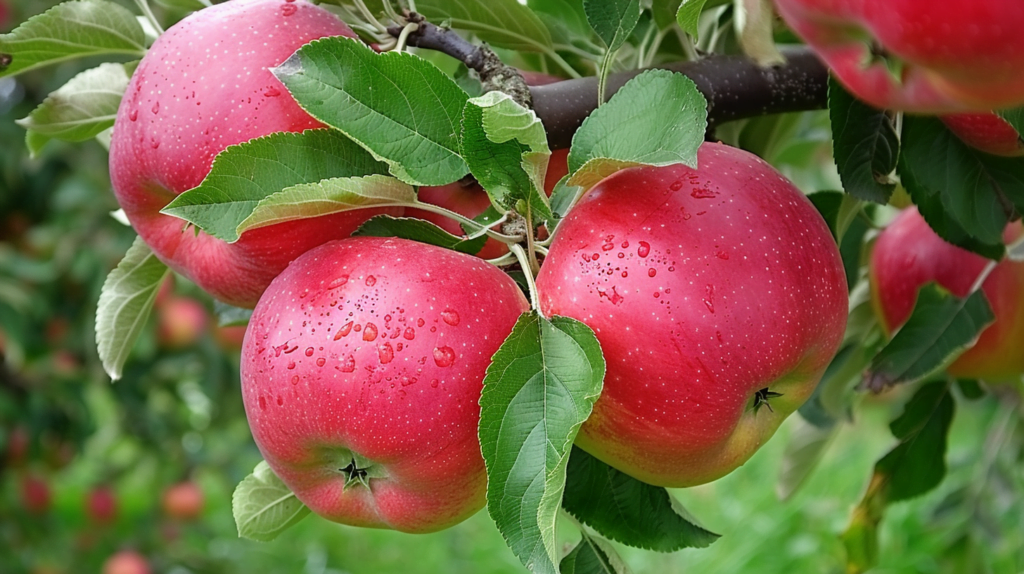
Common Mistakes to Avoid
When it comes to pruning apple trees, a few common missteps can lead to less-than-ideal results. Knowing what pitfalls to avoid is key to maintaining healthy and productive apple trees.
Over-Pruning Risks
One significant mistake in pruning is over-pruning, which can lead to a variety of issues for your apple trees. Over-pruning after neglecting a year of pruning should not be done hastily. It is far better to spread the pruning tasks across the current year and the next to diminish stress on the tree (Haus & Garten). Over-pruning can lead to reduced fruit production, weakened tree structure, and slower recovery. Additionally, it can delay harvest times and expose the tree to risks such as sunscald and sunburn on the trunk and branches, which can be fatal. To prevent these issues, adhere to the one-third pruning rule, ensuring not to remove more than a third of the wood at any given time.
Using the Right Tools
The use of appropriate tools is crucial when pruning. If a tool feels difficult to maneuver, it may indicate a need for a different tool. For smaller branches, garden shears are suitable, while larger branches require long-handled trimmers like the PowerPRO bypass loppers, which are also effective for shrubs and flowers (Haus & Garten).
For branches approximately two to six inches thick, a Corona folding saw with a ten-inch blade is recommended. Switch to Corona 16-inch loppers for branches thinner than six inches. For the thinnest branches, less than the thickness of a pinky finger and especially those located inside a dense canopy, Felco 2 pruners (pruning shears) are the tool of choice.
Proper cuts are essential; prune limbs back to the collar, the point where a branch meets a main branch or the trunk. Avoid flush cuts, as they do not heal properly and can lead to infection. Similarly, leaving too large a stub can also result in decay. Employ clean and sharp tools to avoid jagged and frayed cuts that take longer to heal, leaving the tree vulnerable to pests and diseases (Homes & Gardens).
While some suggest sanitizing pruning tools between trees to prevent disease spread, there is little evidence to support that pruning tools are a common vector for disease transmission from tree to tree.
By avoiding these common mistakes and utilizing the right techniques and tools, you can help ensure your apple trees remain healthy and yield a bountiful harvest. For more guidance on apple tree care, explore our articles on dwarf apple trees, how to plant apple trees, and apple tree blossoms.
Pruning Different Fruit Trees
While pruning apple trees is essential for their health and productivity, other fruit trees also benefit from specific pruning techniques. Pear, plum, and apricot trees each require a unique approach to pruning to ensure they produce bountiful and quality fruit. Let’s explore the pruning methods suitable for each of these tree types.
Pear Tree Pruning
Pear trees share similarities with apple trees in their pruning needs, yet they exhibit a more upright growth pattern. To encourage a stronger, more horizontal branch structure, which is vital for supporting the weight of the fruit, branch spreaders are often recommended (New Garden). Since pear trees are slow to begin fruiting and produce their fruits on spurs, it’s crucial to develop wider crotch angles early on.
Here are key points to consider when pruning pear trees:
- Use branch spreaders to encourage horizontal growth.
- Focus on shaping the tree during its early years.
- Remove any diseased or damaged branches to maintain tree health.
Plum Tree Pruning
Plum trees primarily bear fruit on spurs that emerge on wood that is at least two years old. Heavy pruning is not advisable for plum trees as it can lead to an overabundance of watersprouts, which are vigorous, vertical shoots that can crowd the tree and hinder fruit production. Instead, light annual thinning of small branches and twigs will maintain air circulation and sunlight penetration, preventing a decline in fruit production within the tree’s inner canopy.
Effective plum tree pruning involves:
- Light annual thinning to maintain fruit production.
- Avoiding heavy pruning to prevent excessive watersprout growth.
- Ensuring sunlight and air can reach the inner areas of the tree.
Apricot Tree Pruning
Apricots are known to produce fruit on short spurs that remain productive for approximately three years. Similar to plum trees, apricot trees require annual thinning of their upper branches. This practice is essential to prevent inner shading, which can diminish fruit quality and yield. Additionally, thinning stimulates the development of new fruiting spurs, ensuring the tree’s productivity for future seasons (New Garden).
Key considerations for apricot tree pruning include:
- Annual thinning of upper branches to promote new spur growth.
- Maintaining an open canopy structure to prevent shading.
- Regular removal of older, less productive spurs to encourage fruiting.
In conclusion, understanding the distinct growth and fruiting habits of pear, plum, and apricot trees is important for effective pruning. By tailoring your approach to each tree type, you can maximize fruit production and maintain the health and structure of your trees. For more guidance on fruit tree care, including dwarf apple trees and how to plant apple trees, be sure to explore our other resources.
Seasonal Pruning Tips
Pruning is a critical care practice for maintaining the health and productivity of apple trees. Seasonal timing plays a crucial role in the pruning process, with specific considerations for both winter and summer pruning. Understanding the optimal times and methods for seasonal pruning will help ensure that your apple trees continue to thrive year after year.
Winter Pruning
Winter, specifically late winter or early spring, is the prime time for pruning apple trees to prevent damage and promote healthy growth. During this period, trees are generally dormant, which minimizes sap loss and allows for better wound healing once the growing season begins. Pruning at this time helps invigorate the tree for spring, encouraging the development of strong, fruit-bearing branches.
According to Haus & Garten, it is important to avoid pruning too early in winter, as the tree should still be able to withstand the cold without becoming harmed by the cuts.
| Season | Pruning Timeframe | Purpose |
|---|---|---|
| Winter | Late winter to early spring | Invigorate tree, prevent damage, improve wound healing |
Summer Pruning
Summer pruning should be approached with care, as it involves removing energy-producing portions of the tree, which can reduce overall growth. The goal of summer pruning is to manage the tree’s shape by removing upright and vigorous current season’s growth via thinning cuts. This can help control the size of the tree, particularly in the case of dwarf apple trees, and improve sunlight penetration and air circulation within the canopy.
New Garden suggests that while summer pruning can start when buds begin to grow, it is best to wait until new growth is several inches long to clearly identify which branches should be removed.
As a general rule, avoid autumn pruning, especially in colder climates, as trees may not effectively heal pruning wounds during this time of slowed growth. Additionally, pruning too soon, such as in fall, can stimulate new growth that is vulnerable to winter frosts (Homes & Gardens).
| Season | Pruning Timeframe | Purpose |
|---|---|---|
| Summer | After new growth is several inches long | Control shape, improve sunlight and air circulation |
By adhering to these seasonal pruning tips and combining them with proper planting techniques and care for apple tree blossoms, you can enhance the overall health and productivity of your apple trees. Remember, the goal of pruning is not only to shape the tree but also to ensure that it can produce the best possible fruit.
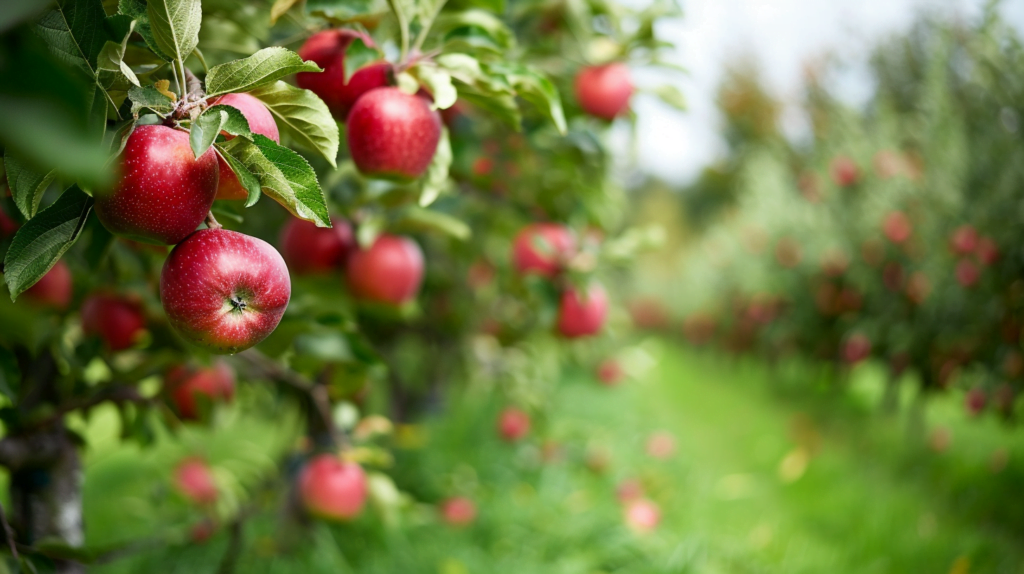
Best Practices for Apple Trees
Proper pruning is a critical practice for maintaining the health and productivity of apple trees. It influences not only the tree’s vigor and shape but also the quality and quantity of the fruit it bears. These best practices will guide you through making the right cuts and monitoring the growth of your apple trees.
Proper Cuts
When pruning apple trees, it is essential to make clean and precise cuts to ensure the tree’s health and encourage fruitful production. Here are some guidelines on making proper cuts:
- Timing: The optimal time for pruning apple trees is in the late winter or very early spring before any new growth starts. This timing allows the tree to heal quickly with the surge of spring growth.
- Technique: Prune last year’s new growth back every season to maintain the health and shape of the tree. Aim to create an open canopy that allows light and air to penetrate, which is crucial for fruit quality and reducing disease pressure.
- Type of Cut: There are two main types of cuts used when pruning:
- Heading Cuts: Shorten a branch or twig and encourage the growth of buds nearest to the cut. Use these sparingly, as they can stimulate excessive vegetative growth.
- Thinning Cuts: Remove entire branches or limbs to improve tree structure and open up the canopy.
- Goal: The primary goals when pruning an apple tree are to maintain tree health and promote fruit production on the “spurs” or “old wood”.
For specific pruning techniques and how they relate to different apple tree varieties, including dwarf apple trees, refer to our detailed guides.
Monitoring Tree Growth
After pruning, it is crucial to monitor the apple tree’s response to the cuts:
- Observe the Healing: Check the areas where cuts were made for proper healing. Cuts should callous over without signs of infection or decay.
- Assess New Growth: Look for healthy new growth that follows the desired direction and shape of the tree. Overly vigorous growth may indicate over-pruning, which can stress the tree and lead to a decline in health.
- Evaluate Fruit Production: Keep track of the quantity and quality of fruit produced. Pruning should result in a bountiful harvest of well-sized, flavorful apples.
- Inspect for Pests and Diseases: An appropriately pruned apple tree should have improved air circulation and sunlight penetration, reducing the risk of pests and diseases.
By following these best practices and monitoring your tree’s growth, you can ensure that your apple trees remain healthy and productive for many years. Whether you are a novice gardener learning how to plant apple trees or an experienced grower admiring the apple tree blossoms, understanding the art and science of pruning is key to successful apple tree cultivation.
